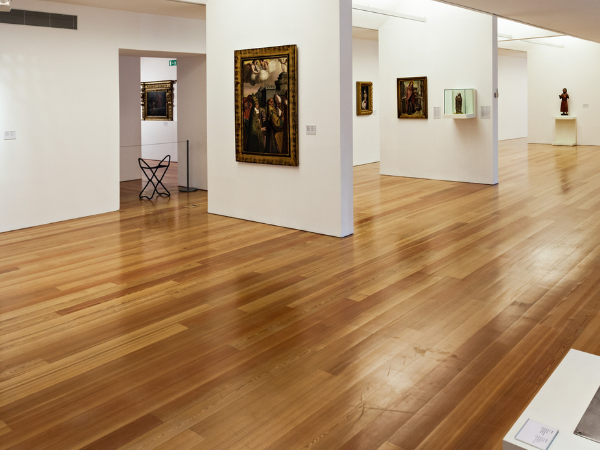“The Return of the Prodigal Son” is one of Rembrandt van Rijn’s most famous paintings. It tells a powerful story of forgiveness and redemption.
This artwork captures the emotional reunion between a father and his wayward son. The scene is rich with detail and deep feelings. Rembrandt’s use of light and shadow adds to the painting’s impact. It invites viewers to reflect on themes of love, mercy, and the human experience.
Created in the 17th century, this piece continues to resonate today. It speaks to everyone who has faced challenges in relationships. Understanding this painting offers insight into not only Rembrandt’s genius but also the timeless nature of family bonds and forgiveness.
Artistic Context
The Return of the Prodigal Son by Rembrandt van Rijn is a profound work of art. It captures the themes of forgiveness and redemption. The painting holds a special place in the context of the artist’s life and the period in which he lived. Understanding its artistic context helps us appreciate its depth and meaning.
Historical Background
Rembrandt painted The Return of the Prodigal Son in 1669, during a tumultuous time in his life. This period marked the end of the Dutch Golden Age. Many artists faced challenges as economic conditions changed. Rembrandt’s personal life was also difficult. He suffered the loss of his wife and children. These experiences deeply influenced his art.
Key historical points include:
- The Dutch Republic was a center of art and culture.
- Rembrandt was known for his masterful use of light and shadow.
- The painting reflects biblical themes, popular in Dutch art.
- Rembrandt’s later works often show a more emotional depth.
This painting is based on a parable from the Bible. It tells the story of a son who returns home after squandering his inheritance. The father’s joyful acceptance symbolizes unconditional love. The historical context adds layers to this message.
Rembrandt’s Style
Rembrandt’s style in The Return of the Prodigal Son is unique and expressive. He is known for his dramatic use of light, known as chiaroscuro. This technique creates a strong contrast between light and dark. In this painting, the light focuses on the figures of the father and son. This highlights their emotional connection.
Some characteristics of Rembrandt’s style in this work include:
- Rich color palette
- Detailed textures in clothing and skin
- Emotional expressions on the characters’ faces
- Naturalistic portrayal of human figures
The composition is also significant. The figures are placed in a way that draws the viewer’s eye. The father’s embrace is both tender and powerful. Rembrandt captures the moment of reconciliation beautifully. This style invites viewers to reflect on their own experiences of love and forgiveness.
The Prodigal Son Story
The Return of the Prodigal Son, painted by Rembrandt van Rijn, captures a powerful story of loss and redemption. The Prodigal Son story originates from the Bible, specifically in the Gospel of Luke. This tale resonates with many because it speaks to our human experiences. Themes of forgiveness and reconciliation are central to this narrative. Rembrandt’s artwork beautifully illustrates these themes, inviting viewers to reflect on their own lives.
Biblical Origins
The Prodigal Son story appears in the Gospel of Luke, chapter 15, verses 11-32. This parable tells of a young man who asks his father for his share of the inheritance. He leaves home and squanders his wealth on reckless living. After facing hardship, he returns home, hoping for forgiveness.
Key elements of the story include:
- The father’s love and acceptance.
- The son’s journey of self-discovery.
- The older brother’s resentment.
Here is a brief overview of the characters:
| Character | Description |
|---|---|
| The Prodigal Son | Young man who leaves home and squanders his wealth. |
| The Father | Symbol of unconditional love and forgiveness. |
| The Older Brother | Represents jealousy and the struggle for acceptance. |
This story highlights the importance of understanding and compassion. It teaches that no matter how far we stray, there is always a path back home.
Themes Of Forgiveness
The Prodigal Son story emphasizes the theme of forgiveness. The father forgives his son without hesitation. This act of grace shows that love can overcome mistakes. The father’s reaction is crucial. He does not scold or reject his son; instead, he welcomes him with open arms.
Important aspects of forgiveness in this story include:
- Unconditional love: The father’s love remains constant.
- Acceptance of flaws: Everyone makes mistakes.
- Restoration of relationships: Forgiveness heals broken bonds.
Forgiveness also plays a role in the older brother’s journey. His struggle reveals human emotions such as jealousy and resentment. This adds depth to the narrative. It shows that forgiveness is not just about the one who returns but also about those who stay.
In summary, the story teaches us valuable lessons about love and acceptance. It encourages us to embrace forgiveness in our lives.
Composition And Elements
The Return of the Prodigal Son by Rembrandt Van Rijn is a masterpiece of emotional depth. This painting captures the moment of reunion between a father and his wayward son. The composition and elements of the artwork play a crucial role in conveying its powerful message. Rembrandt carefully arranged each part to enhance the story, using color and light to evoke strong feelings.
Color Palette
The color palette in The Return of the Prodigal Son is rich and expressive. Rembrandt uses a limited range of colors to create depth and focus on the main figures. Warm tones dominate the painting, emphasizing the emotional warmth of the scene. Here are some key points about the color palette:
- Warm Colors: The use of reds, oranges, and browns creates a sense of intimacy.
- Cool Accents: Hints of blue and green add contrast and highlight the figures.
- Skin Tones: Realistic skin tones enhance the emotional connection.
The following table shows the main colors used in the painting:
| Color | Emotion Conveyed |
|---|---|
| Red | Love and warmth |
| Brown | Stability and comfort |
| Blue | Calmness and reflection |
These colors help to draw attention to the emotional reunion. The overall effect creates a sense of harmony and balance. Rembrandt’s thoughtful choices enhance the narrative, inviting viewers to feel the joy and forgiveness present in the scene.
Use Of Light
Rembrandt’s use of light in The Return of the Prodigal Son is masterful. Light plays a vital role in highlighting the main figures and creating a sense of drama. The contrast between light and shadow, known as chiaroscuro, adds depth to the painting. Here are some key aspects:
- Focal Point: The light illuminates the father and son, drawing the viewer’s eye.
- Symbolism: Light represents forgiveness and divine love.
- Shadows: The darker areas emphasize the emotional struggles of the characters.
Rembrandt uses light to separate the figures from the background. This technique creates a three-dimensional effect. The following points summarize the impact of light:
- Creates emotional intensity.
- Enhances the spiritual message.
- Guides the viewer’s focus.
The play of light and shadow helps convey a sense of hope. It reflects the father’s unconditional love for his son. Rembrandt’s skillful manipulation of light elevates the emotional resonance of the painting.
Emotional Impact
The Return of the Prodigal Son by Rembrandt Van Rijn is more than just a painting. It captures deep emotions and complex feelings. The artwork tells a story of forgiveness, love, and redemption. Each detail in the painting helps convey its emotional impact. The expressions and body language of the characters bring the scene to life. Viewers can feel the tension, joy, and pain. This emotional depth invites us to reflect on our own experiences of loss and reconciliation.
Facial Expressions
Rembrandt skillfully uses facial expressions to show strong emotions. The faces in the painting reveal their inner feelings. The father’s face shines with joy and relief. His eyes are soft, filled with love. This warmth contrasts with the son’s face. The son shows shame and sorrow. His expression tells a story of regret. It shows his struggles and hopes.
Key facial expressions in the artwork:
- Father: Joyful and forgiving.
- Son: Ashamed and hopeful.
- Other characters: Mixed emotions of surprise and relief.
The emotions are not just in the father and son. The bystanders also have unique expressions. Some look surprised; others seem relieved. This variety adds depth to the scene.
The table below highlights the emotional range of the characters:
| Character | Emotion |
|---|---|
| Father | Joy |
| Son | Regret |
| Bystanders | Surprise, relief |
Body Language
Body language is another powerful aspect of this painting. It tells a lot about the characters’ feelings. The father stands with open arms. This gesture shows acceptance and love. He is ready to embrace his son. The son, however, is hunched over. His posture reveals shame and vulnerability. He seems to seek forgiveness.
Key elements of body language include:
- Father’s posture: Open and welcoming.
- Son’s stance: Crouched and submissive.
- Other characters’ gestures: Mixed reactions, some arms crossed, others reaching out.
These body movements enhance the emotional impact. They allow viewers to feel the tension in the moment. The father’s readiness to forgive stands in contrast to the son’s shame. This difference highlights the themes of forgiveness and acceptance.
In summary, both facial expressions and body language work together. They create a rich emotional landscape in The Return of the Prodigal Son. Each detail helps viewers connect with the story on a personal level.
Symbolism
The painting “The Return of the Prodigal Son” by Rembrandt van Rijn is rich in symbolism. It tells a powerful story of forgiveness, love, and redemption. Each detail in the artwork carries deep meaning. The emotions shown by the characters reveal their inner struggles. Understanding these symbols can enhance our appreciation for the painting. Let’s explore the key symbols in this masterpiece.
Father’s Embrace
The embrace between the father and the son is the heart of the painting. It represents unconditional love and forgiveness. This moment captures the essence of the father’s joy at his son’s return.
- Open arms: The father’s open arms symbolize acceptance.
- Positioning: The father kneels, showing humility and compassion.
- Facial expression: The father’s face reflects happiness and relief.
This embrace signifies several important themes:
- Forgiveness: The father forgives the son for his mistakes.
- Reunion: The joy of family coming together again.
- Love: The father’s love remains strong, despite the son’s actions.
In this scene, the father stands as a symbol of divine love. This love is always present, waiting to embrace those who return.
Clothing And Posture
The clothing and posture of the characters in the painting reveal much about their identities. The contrast between the father and son highlights their experiences.
| Character | Clothing | Posture |
|---|---|---|
| Father | Rich robes, symbolizing dignity and authority | Kneeling, showing humility and love |
| Son | Ragged clothing, symbolizing his lost status | Submissive, indicating shame and repentance |
The father’s rich robes signify his high status. They show he is a person of importance. The son’s ragged clothing tells a story of his struggles. He has lost everything but seeks redemption.
Posture plays a crucial role in the painting. The father’s kneeling position reflects his emotional state. He is filled with compassion. The son’s posture shows his humility. He knows he has made mistakes and seeks forgiveness.
Conclusion
Rembrandt’s “The Return of the Prodigal Son” captures deep emotions. The painting shows love, forgiveness, and redemption. It reminds us of the strength of family bonds. The father’s embrace speaks volumes about compassion. Each detail invites viewers to reflect on their own lives.
Art can teach us important lessons. Rembrandt’s work remains relevant today. It touches hearts across cultures and generations. This masterpiece encourages us to embrace forgiveness and understanding. Let it inspire you to cherish your loved ones.




